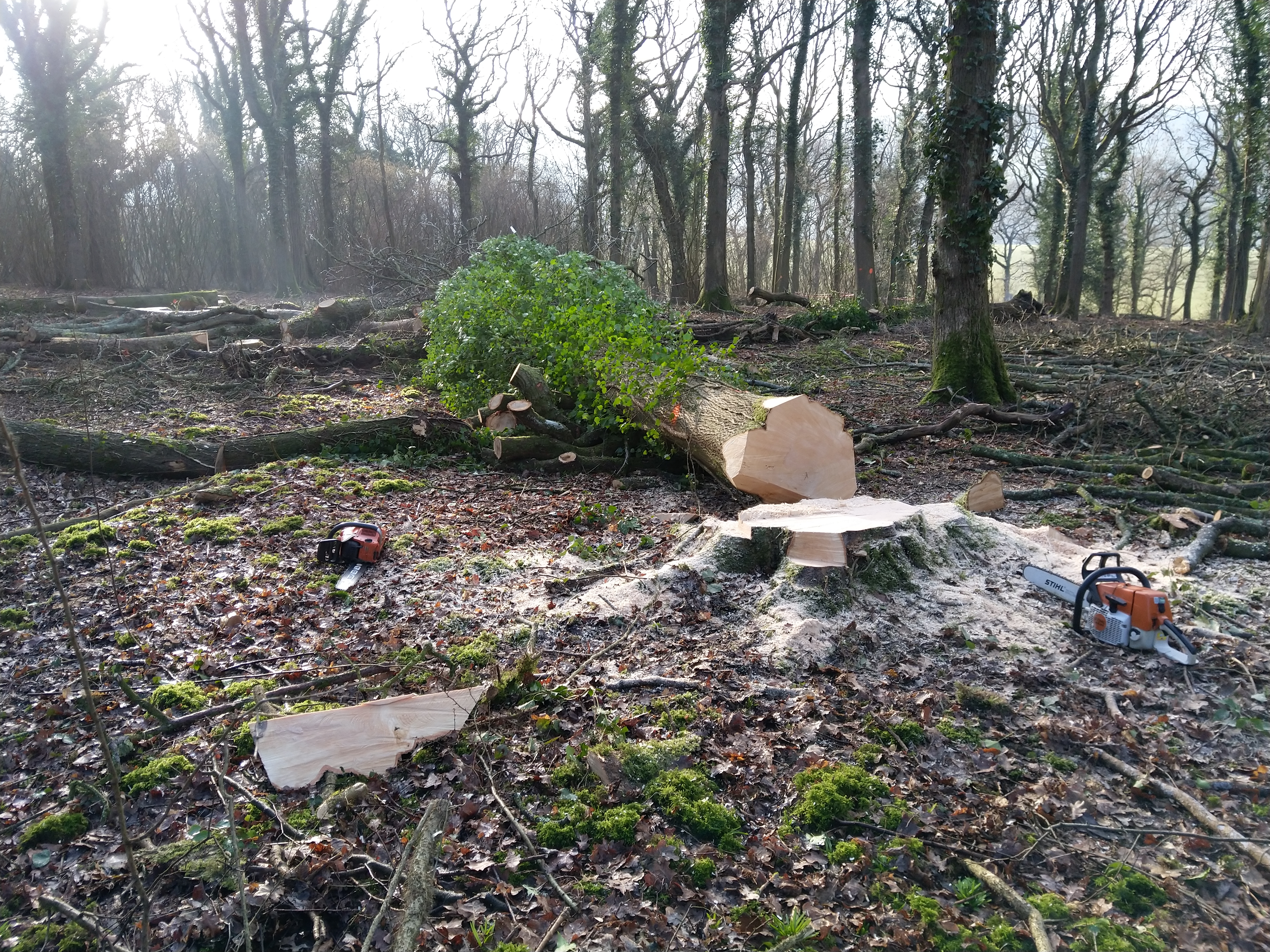
At the start of the New Year, my associate and I were contracted to carry out management in woodland near Henfield, Sussex. These woods in particular are classic ancient, semi-natural woodlands (ASNW) typical of the Sussex Weald, with oak and ash standards over hazel coppice, and I have know them for many years. The work we were doing was the first phase in a three year programme to reinstate a viable coppice rotation. Funded through the South Downs National Park, our remit was to coppice the hazel understorey and to thin the standards, thus allowing more light to reach the woodland floor. Long term, the aim is to reintroduce rare woodland butterflies once the habitat is in suitable condition and naturally, Butterfly Conservation are heavily involved.
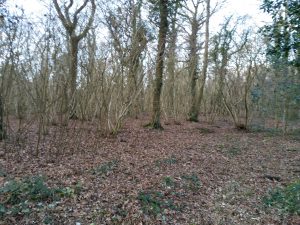
The area we were working was 0.6 hectare and our first task was to coppice all the hazel and burn up as we went along. It might sound wasteful to burn the hazel, but because it was over-stood there was very little in the way of usable product and it would have been too time consuming and expensive to sort through it all. That said, we did save a lot of the straighter, thicker stems and these will be used to help support the temporary deer fence that will protect the coppice regrowth.
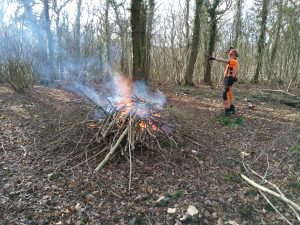
We had agreed to keep fire sites to a minimum, but that would have meant dragging an awful lot of hazel across the site. Luckily, we had a great solution to the problem. We used a 2-stroke capstan winch with a number of re-directs to skid the hazel en-masse to the fire sites. This particular method causes minimum disturbance to the woodland floor and means much less effort for ourselves. In this way, we only needed 4 fire sites to cover the 0.6 hectares.
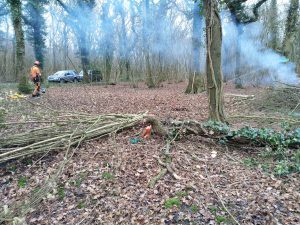
We worked extremely efficiently with this system. I went ahead cutting the hazel stools and laying the stems in drifts. John then followed behind and winched the drifts to the fire sites before cutting them up and burning them. Before long, we were nearing the end of the compartment and the South Downs escarpment had appeared through the trees.
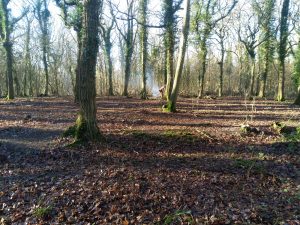
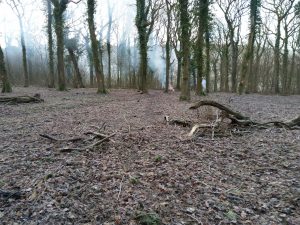
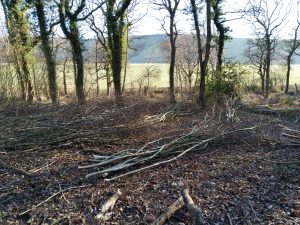
Once the coppicing had been completed, it was time to move on to the felling. There were 40 trees that had been marked up previously, 10 oak and 30 ash. Most looked as though they would come down fairly easily, but there were a few that looked more problematic.
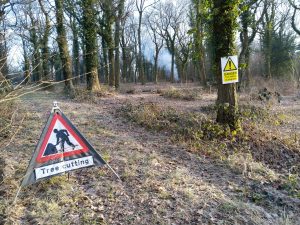
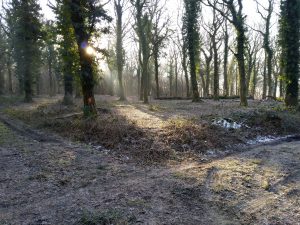
I started at the top of the compartment while John worked at the bottom end. The first few trees were straightforward and very soon we had timber on the deck.
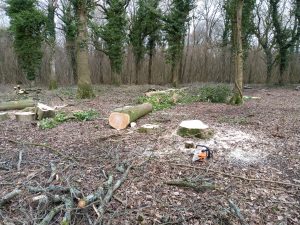
A particular feature of this woodland was the amount of ivy on most of the trees. This always slows down the processing of each stem, but in the end it is just part and parcel of tree felling. Each tree was cut according to quality. There wasn’t a great deal of mill-able timber, but any straight, clean lengths were cut to three metres, the rest was cut to six foot cord-wood length.
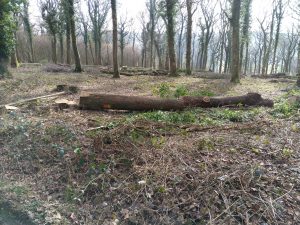
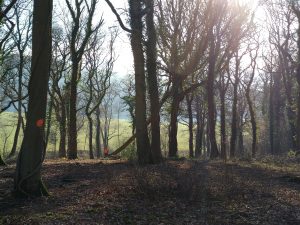
We stacked the cut timber in the compartment ready for later extraction. All the brash and small branch-wood was broken down with the saws and has been left to be recycled naturally back to the woodland floor. One or two of the trees required winch assisted felling to enable them to take the cleanest line of fall and we have both the experience and equipment to do just that.
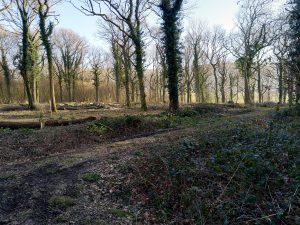
The felling took just 6 days to complete and when the last tree was down and processed, we paused for a moment to take in the view. It had been a great job to undertake and we were very happy with the results of our labours. Work such as this is so important for the health of a woodland, especially an ancient one such as this. There are now gaps in the canopy which allow much more light to the woodland floor. This will encourage the woodland flora to flourish, and in turn this will support invertebrates and the birds and mammals that prey on them. In addition, there is more space and light for the remaining trees to grow on and produce better quality timber for the future.
I have thought many times over the years how I would love to own my own woodland, and when I see one such as this I am more than a little jealous of the owner. However, it is just as much a privilege to be able to work in such a woodland and I have come to realise that it more than makes up for my lack of ownership.

